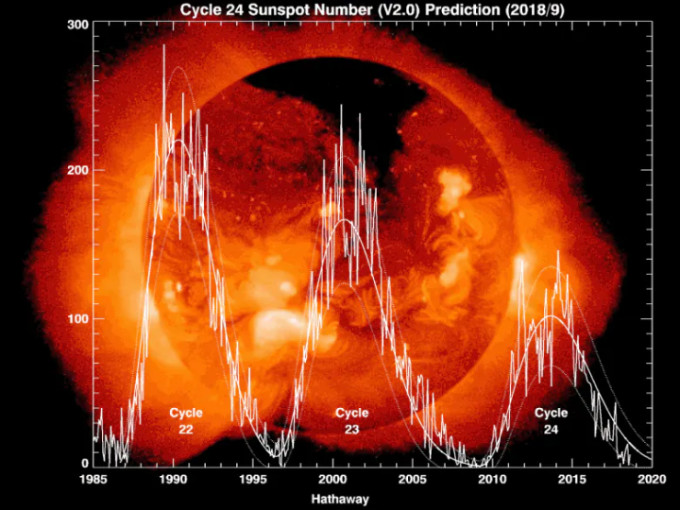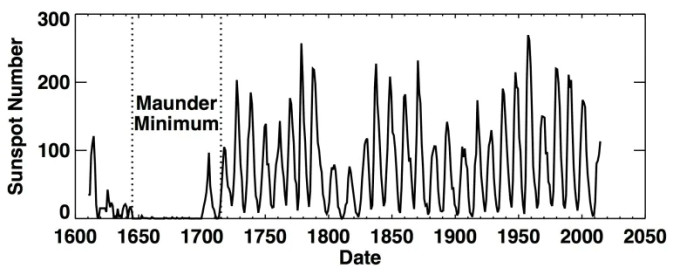Tuesday, March 12th 2019, 3:43 pm - Some fear that we could be heading to another Little Ice Age, but scientists say that's unlikely
In February, for the first time since August 2008, the sun went an entire month without any sunspots.
Sunspots are cooler regions of the sun. How many appear on the sun's surface depends on what cycle the sun is in. Every 11 years our star goes through a maximum, followed by a minimum (the entire magnetic cycle of the sun, when the poles flip, is 22 years).
Over the past three decades, the sun has been consistently dropping in activity. Maximum has been quieter than is typical; minimum has been particularly quiet. And this has caused some to make the false assumption that, as a result, Earth is going to cool.
 This graph shows the decrease in solar activity over the past 33 years. (David Hathaway)
This graph shows the decrease in solar activity over the past 33 years. (David Hathaway)
It all stems from an incident that took place between 1645 and 1715, called the Maunder Minimum, where sunspots all but disappeared. This coincided with the "Little Ice Age" that stretched from 1500 to 1850 in the northern hemisphere. In England, the Thames River froze over; Viking settlers abandoned Greenland.
As a result, there have been strong suggestions that the Maunder Minimum caused the Little Ice Age, but some scientists warn that there were other contributors, such as increased volcanic activity.
 This graph illustrates solar activity over the past four centuries. The Maunder Minimum is evident.
This graph illustrates solar activity over the past four centuries. The Maunder Minimum is evident.
On average, the sun produces 180 sunspots a cycle. The greatest ever was 285 in solar cycle 19; for solar cycle 24, so far it's been 116.
So, with the decrease in solar activity, are we heading into another Maunder Minimum?
"No Maunder Minimum. Certainly no Little Ice Age," said David Hathaway, an astrophysicist who once headed NASA's solar physics branch at the Marshall Space Flight Center. "The next cycle looks like it's going to be very much like this one."
He explains that, while the sun does dim during a minimum, it's only by a tenth of a per cent, which translates into a tenth of a degree Celsius. And with the warming by about 1C that we've seen due to climate change — and the warming that is to come — it's unlikely that we'll notice.
